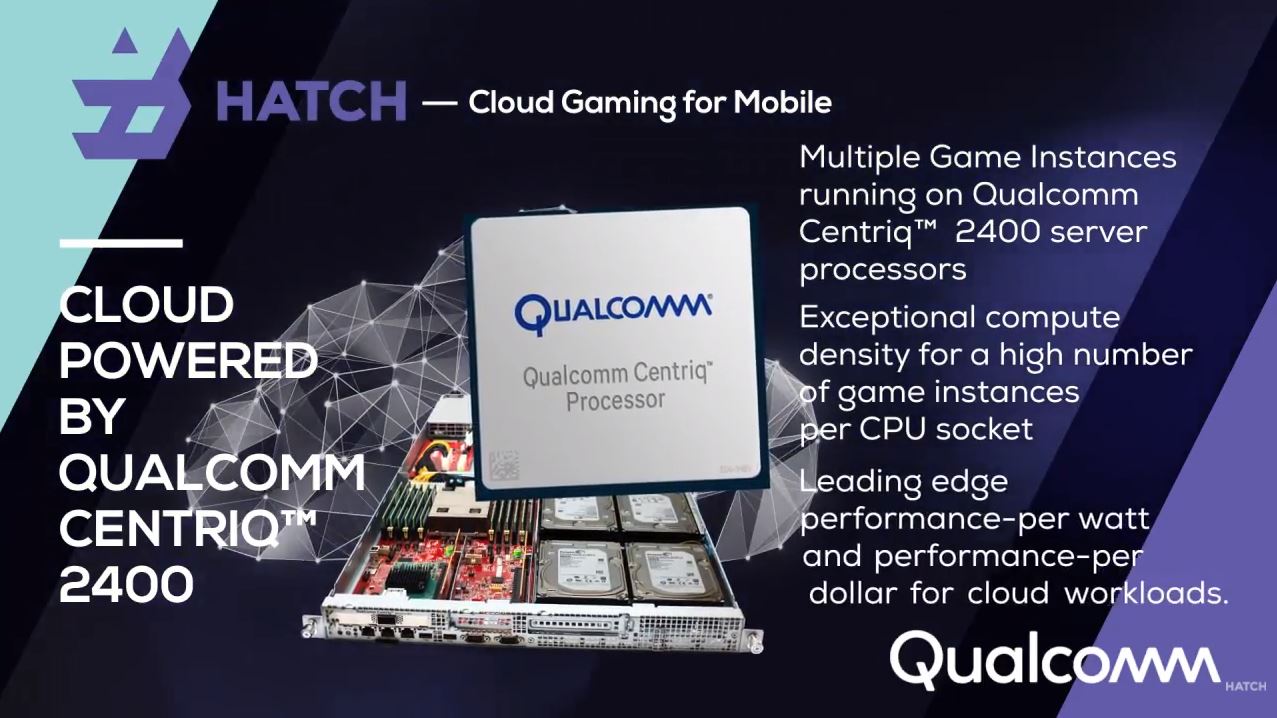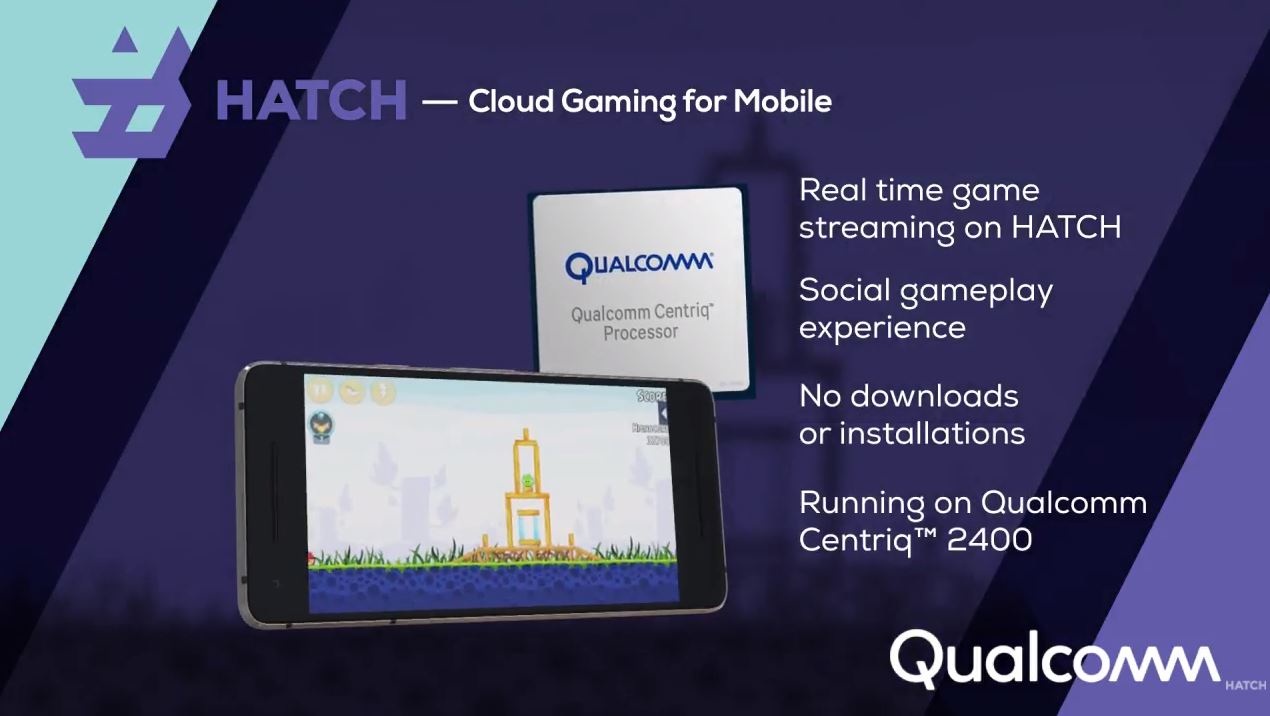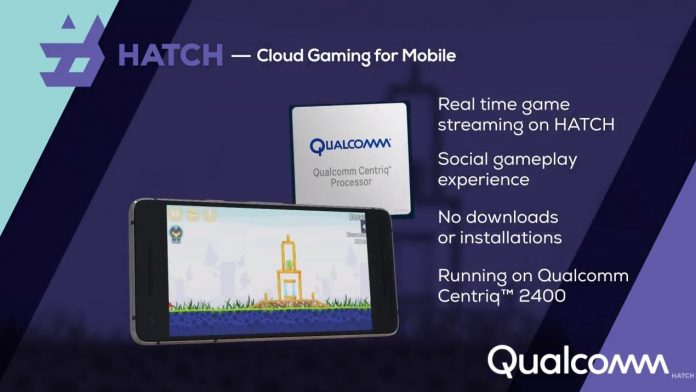After the launch about a quarter ago, it has been relatively quiet on the Qualcomm Centriq 2400 part. Today Qualcomm and Hatch are announcing a partnership running mobile games on Qualcomm Centriq 2400 CPUs.
Qualcomm and Hatch Mobile Gaming
At first, the idea of running mobile games on a server CPU seems counterintuitive. Hatch’s service essentially runs mobile games from a cloud and then streams the game to mobile devices.
The companies briefed STH and one of the key drivers as having more game instances per socket.

In the mobile gaming world, this is a common problem to solve for. For example, one of the major HP Moonshot customers was Zynga who had to solve a core per player problem. Years ago, the HP Moonshot used x86 or ARM cores in micro blades to deliver the maximum number of cores per U. The Hatch and Qualcomm example shows something similar with a noticeable difference. It is running the mobile game directly on the Centriq 2400.

Hatch is essentially running an ARM mobile application on an ARM data center chip. It is then streaming GPU render commands to the mobile device. That saves bandwidth versus streaming the actual video. Finally, the mobile device is sending control inputs back to the server. The game itself never has to be installed on the mobile device saving on storage. It also means that developers who want to use the platform to make mobile co-op games can have multiple people/ controllers running in the same game instance.
Hatch’s Servers
It is likely fair to say that availability of Qualcomm Centriq 2400 over a quarter beyond launch is still nowhere near what AMD EPYC achieved. It is difficult to find a server for purchase if you say, had a DemoEval platform, or a tech site and wanted to run workloads on a production server. We asked Hatch what servers they use, especially given the focus on performance per socket. Hatch assured us that they are not in the business of servers and use a cloud provider. We are going to guess Packet, who coincidentally, we saw the Dell EMC PowerEdge AMD EPYC servers being installed last week in one of their locations. Of course, the use of Packet was not confirmed so this is wild speculation.
Final Words
Hatch seems like an interesting service so long as you are not paying for data and have access to low latency networks. The company is rolling out based on where the cloud servers are being deployed to manage demand and latency. In terms of a proof point for Qualcomm, this is certainly intriguing as the idea of running mobile application instances in the cloud may appeal to some segments of the market.





The only ARMv8 offered by packet.net is ThunderX.
They must be leaving a key factor out of their public information because, as they describe it, I fail to see any advantage. A key reason to stream games is to be able to take advantage of faster hardware on the server, if they’re just streaming GPU commands then the mobile device still has to render it, which means you’re limited by the capabilities/speed of the device’s GPU.. it’s the same as running the game on the device except with the latency introduced by wifi/cellular connections, which can significantly impact user experience. If you’re going to have the device do the rendering then offload other tasks (AI, state management, etc) to the server and have stream state updates to the mobile device which renders accordingly.
Yeah that sounds like marketing blahblah to me. My phone is a lot more powerful than any small slice of CPU I can get in “the cloud”, and I believe the same probably applies to cheaper phones – after all cramming more cores into a die usually is more than linearly more expensive. Most phones available today also don’t lack any storage. On the other hand I’m paying through the nose for mobile data (10 EUR for a gigabyte).
Cloud Computing is good for everyone. because you can save the data in cloud computing. Playing mobile game is very easy on android mobile. Mobile game Qualcomm is the good game.
Piecing together the info that they need to have servers close to their customers to avoid high latency and Cloudflare’s announcement a while ago that they were going to deploy Centriq for some specific workloads (in the same blog article where CF showed Centriq benchmarks vs Intel Scalable), maybe this is a new service being offered by CloudFlare?
Pa
Marcelo – It is Packet https://www.servethehome.com/packet-dell-emc-poweredge-amd-epyc-server-deployment-accelerating/